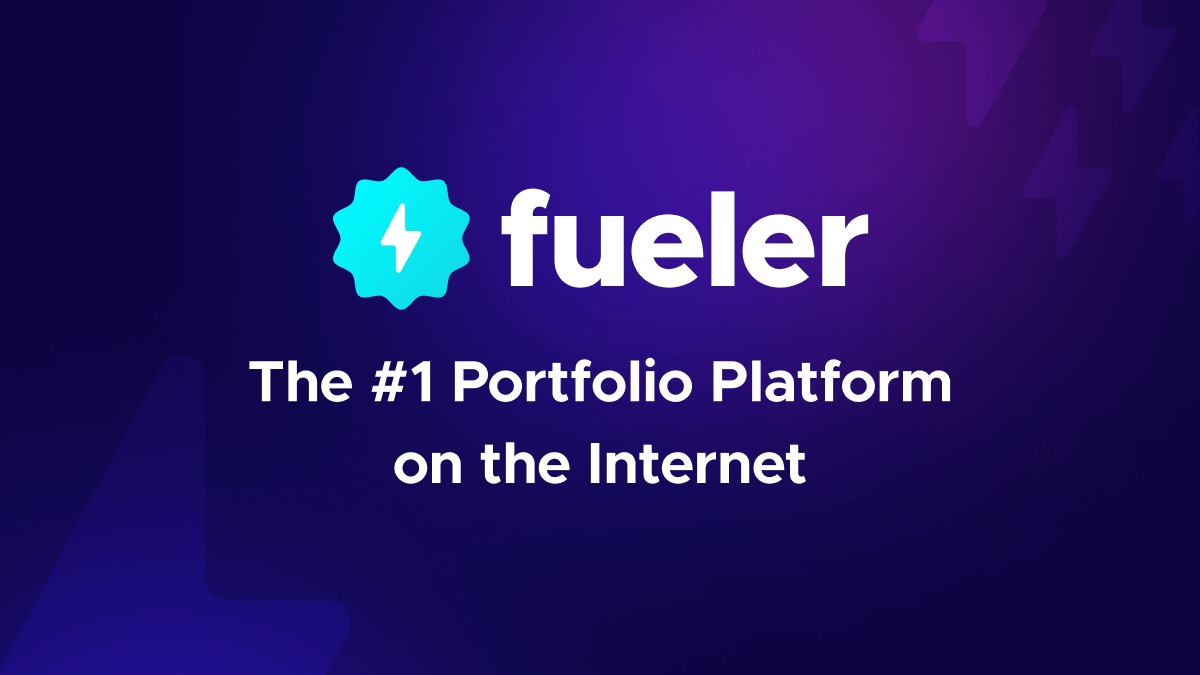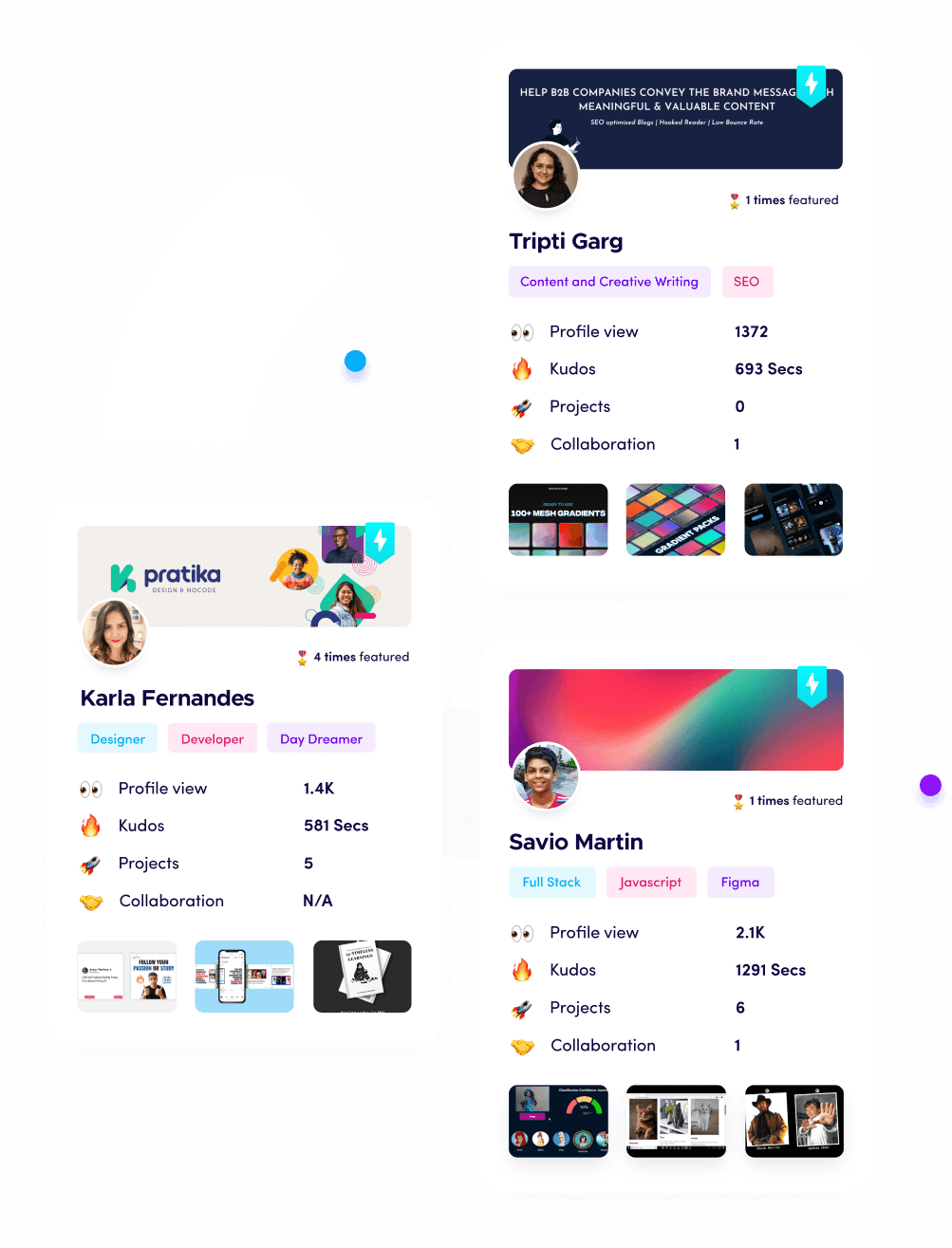How to Land Clients with Your Copywriting Portfolio

Riten Debnath
15 Jun, 2025

Are you tired of sending your copywriting portfolio to clients and hearing nothing back? In 2025, with competition fiercer than ever, you need more than just good writing—you need a portfolio that proves your value, builds trust instantly, and makes you the obvious choice for any client.
I’m Riten, founder of Fueler, a platform that helps freelancers and professionals get hired through their work samples. In this article, I’ll show you how to create a copywriting portfolio that lands clients, not just compliments. Because in today’s market, your portfolio isn’t just a gallery, it's your proof, your credibility, and your shortcut to trust.
1. Showcase Real Assignments and Results
Don’t wait for paid gigs to build your portfolio. Start by creating mock ads, landing pages, product descriptions, or email campaigns for brands you admire. Also, demonstrating strategies that improve email engagement in your mock campaigns can show potential clients that you understand how to capture attention and drive measurable results. Explain your thought process, research, and the strategy behind each piece. If possible, include metrics or hypothetical outcomes—for example, “This landing page is designed to boost signups by 30% by focusing on user pain points.” Clients want to see your thinking, not just your writing.
The best portfolios go beyond just showing the final copy. They tell the story of the project: What was the client’s challenge? How did you approach the problem? What research did you do? What results did you achieve (or would you expect to achieve)? This context helps clients understand your value as a strategic thinker, not just a writer.
2. Personalize Your Portfolio for Every Client
Sending the same portfolio to every client is a missed opportunity. Research each prospect’s industry, brand voice, and target audience, then select or create samples that are directly relevant. Add a short introduction explaining why you chose those pieces and how your skills align with their needs. This shows attention to detail and makes your application stand out.
For example, if you’re pitching a SaaS company, include samples of technical blog posts, onboarding emails, or website copy you’ve written for similar clients. If you’re targeting e-commerce brands, highlight product descriptions, sales emails, and ad copy. The more relevant your portfolio is to the client’s needs, the more likely they are to see you as the perfect fit.
3. Highlight Results and Impact, Not Just Samples
Clients are looking for copywriters who can drive business outcomes, not just write pretty words. For every sample, include a brief case study: What was the goal? What was your approach? What results did you achieve (or would you expect to achieve)? Use real numbers whenever possible, like “Increased email open rates by 22%” or “Helped launch a campaign that generated 500+ leads.”
If you’re just starting out and don’t have real results, create hypothetical case studies. Explain how your copy is designed to achieve specific goals, and back up your claims with research or industry benchmarks. This shows that you understand the business side of copywriting and can deliver measurable value.
4. Use a Clean, Professional, and Easy-to-Navigate Format
Your portfolio should be visually appealing but not cluttered. Use clear headings, brief project summaries, and easy navigation. Group similar projects together (e.g., email campaigns, landing pages, ads) so clients can quickly find what they’re looking for. Make sure your contact information is visible on every page.
Consider using platforms like Fueler, Behance, or Notion to organize your portfolio. These platforms make it easy to update your work, add new samples, and share your portfolio with potential clients. A well-organized portfolio not only looks professional but also makes it easier for clients to see your skills and experience.
5. Include a Variety of Copywriting Styles and Formats
Show off your versatility by including different types of copy: website content, ad copy, email sequences, social media posts, product descriptions, and more. This demonstrates that you can adapt your writing to any platform or audience, making you a more attractive hire.
For example, include a persuasive landing page, a catchy Facebook ad, a nurturing email sequence, and a detailed blog post. Explain the unique challenges and strategies for each format. This not only showcases your range but also helps clients see how you can contribute to multiple areas of their business.
6. Tell the Story Behind Each Project
Don’t just show the finished product. Briefly explain the client’s challenge, your research process, the strategy you used, and how you measured success. This context helps clients understand your value as a strategic thinker, not just a writer.
For example, if you wrote a sales page for a new app, explained how you researched the target audience, identified their pain points, and crafted a message that addressed their needs. Share any feedback you received from the client or users, and describe how you iterated on the copy to improve results.
7. Keep Your Portfolio Up to Date
Regularly update your portfolio with new projects, skills, and testimonials. Remove outdated or less relevant samples. A fresh, relevant portfolio signals that you’re active in the industry and always improving.
Set a reminder to review your portfolio every few months. Add new work, update your bio, and refresh your design if needed. This ongoing maintenance ensures that your portfolio always reflects your best work and current skills.
8. Leverage Testimonials and Social Proof
Whenever possible, include client testimonials, reviews, or endorsements. Social proof builds trust and reassures potential clients that you deliver results. If you’re new, ask for feedback from peers or mentors on your mock projects.
Include testimonials alongside relevant samples, or create a dedicated section for reviews. Even a short quote from a satisfied client or colleague can make a big difference in building credibility.
9. Optimize Your Portfolio for SEO and Discoverability
Use relevant keywords throughout your portfolio—think “copywriting for SaaS,” “email marketing specialist,” or “conversion copywriter.” This helps clients find you through search engines and increases your chances of landing inbound leads.
Optimize your project descriptions, use descriptive titles, and add tags or categories for each sample. Share your portfolio on LinkedIn, Twitter, and relevant forums to increase visibility and attract more opportunities.
10. Strategically Use Portfolio Platforms
Platforms like Fueler allow you to showcase your work in a structured, assignment-based format. This makes it easy for companies to assess your skills, see your process, and understand your impact. By presenting your work on a trusted platform, you increase your visibility and credibility with potential clients.
Fueler also lets you highlight specific skills, add context to each project, and track your progress over time. This makes it easier for clients to see your growth and potential.
11. Network and Share Your Portfolio Widely
Don’t just wait for clients to come to you. Share your portfolio on LinkedIn, Twitter, relevant forums, and in your email signature. Reach out to potential clients with a personalized message and a link to your best work. The more eyes on your portfolio, the more opportunities you’ll create.
Attend industry events, join online communities, and connect with other freelancers and agencies. Building relationships and staying active in your niche will help you attract more clients and referrals.
12. Continuously Learn and Adapt
The copywriting world changes fast. Stay up to date with the latest trends, tools, and best practices. Add new skills, experiment with different styles, and always look for ways to improve your portfolio. This commitment to growth will set you apart from the competition.
Take online courses, read industry blogs, and seek feedback from peers and mentors. The more you learn, the more value you can offer to clients—and the more impressive your portfolio will become.
Final Thoughts
Landing clients as a copywriter in 2025 is about more than just writing well. It’s about proving your value, building trust, and showing real results. Invest in your portfolio, keep it fresh, and use platforms like Fueler to stand out in a crowded market.
FAQs: Copywriting Portfolio
1. What should I include in my copywriting portfolio to attract clients?
Include a variety of samples, case studies with results, testimonials, and a clear explanation of your process.
2. How do I create a portfolio if I have no paid experience?
Start with mock projects for brands you admire, explain your strategy, and seek feedback from peers or mentors.
3. How often should I update my copywriting portfolio?
Update your portfolio every few months or whenever you complete a new, relevant project.
4. Which platforms are best for hosting a copywriting portfolio?
Use platforms like Fueler that allow you to showcase work samples, assignments, and results in a professional format.
5. How can I use SEO to get more clients through my portfolio?
Incorporate relevant keywords, optimize your project descriptions, and share your portfolio on social media and professional networks.
What is Fueler Portfolio?
Fueler is a career portfolio platform that helps companies find the best talents for their organization based on their proof of work.
You can create your portfolio on Fueler, thousands of freelancers around the world use Fueler to create their professional-looking portfolios and become financially independent. Discover inspiration for your portfolio
Sign up for free on Fueler or get in touch to learn more.


